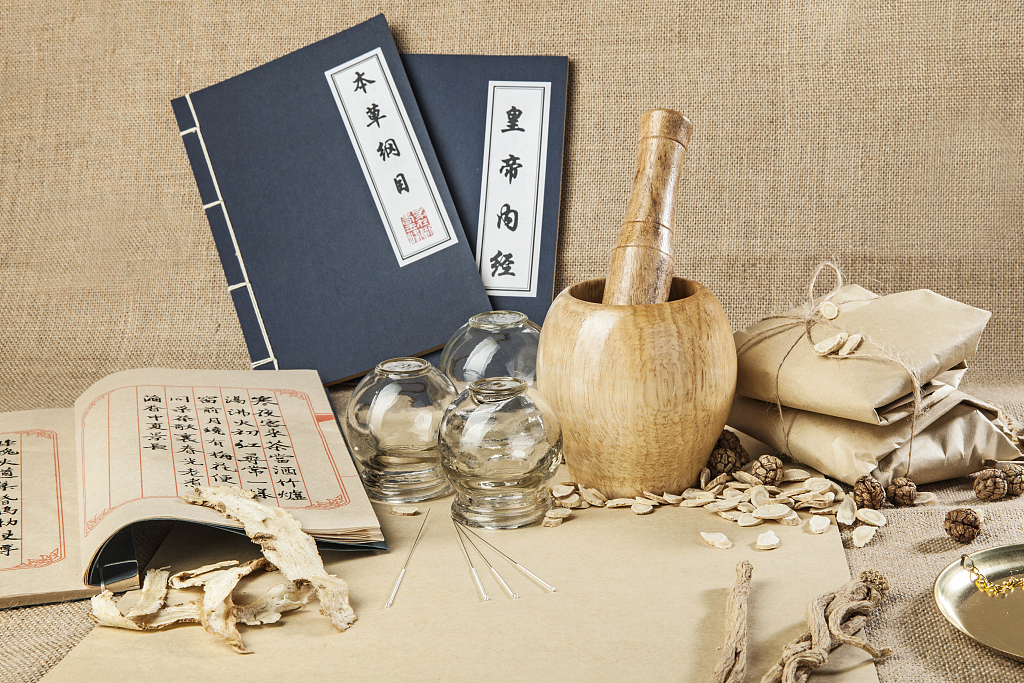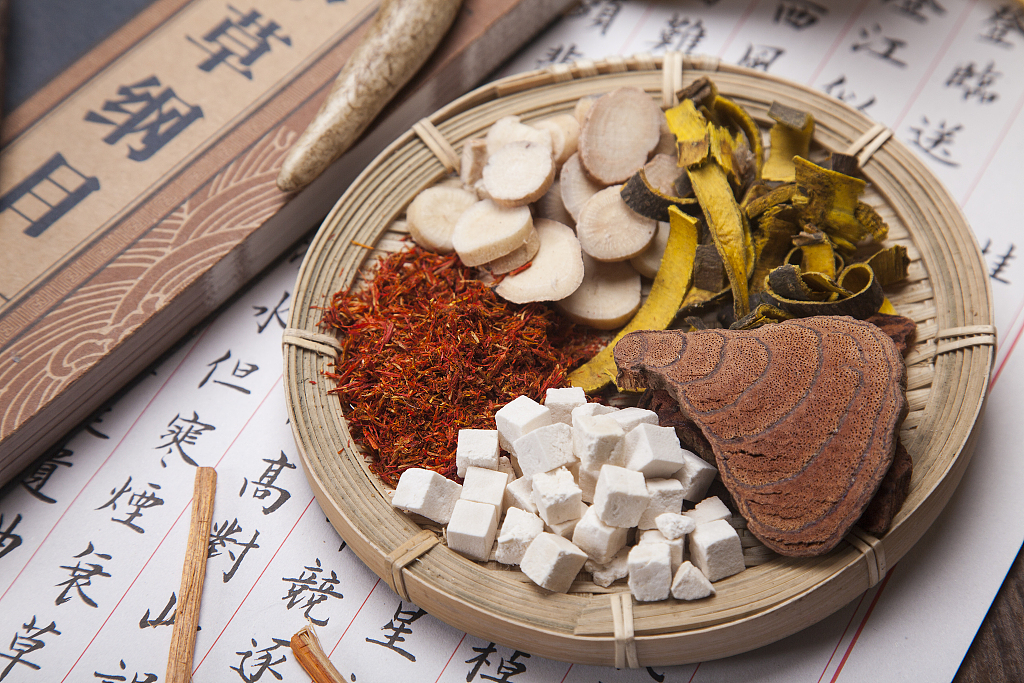Traditional Chinese medicine (TCM) has never missed a single fight against epidemics throughout Chinese long history, including the latest novel coronavirus.
Chinese respiratory specialist Zhong Nanshan said at a press conference held in Guangzhou Province on January 18 that the herbal prescription called "Pneumonia No. 1" had proved effective in the treatment of COVID-19 patients in the province.
The National Administration of TCM said it was used to treat over 85 percent of confirmed coronavirus patients, and a combined treatment of TCM and Western medicine has proven to be effective.
TCM treatment is not just medicine, it also included acupuncture, ear acupuncture point application and Baduanjin, which is a fitness practice with a history of 800 years.

Traditional Chinese medicines treatment includes medicine, acupuncture, ear acupuncture point application and Baduanjin. /VCG Photo
Traditional Chinese medicines treatment includes medicine, acupuncture, ear acupuncture point application and Baduanjin. /VCG Photo
The long history of TCM treatment
Recordings about epidemics could go back to the Shang Dynasty (1600 BC-1046 BC) in China. The sewage system was founded on historical sites of Shang, which means public health facilities were built to prevent the virus.
In the Zhou Dynasty(1046BC-256BC), the royal family held regular ceremonies to banish the plague and professional officials were set up to deal with the epidemic outbreaks.
The traditional Chinese medicines system was maturing after the Qin Dynasty (221BC-207BC). "Huang Di Nei Jing," one of the earliest medical classics in China, has a complete theory of disease control.
In the mid-Ming Dynasty(1368-1644), vaccination against smallpox appeared among Chinese people. Some foreigners came to learn this treatment and bought it back to Europe.

"Huang Di Nei Jing" and "Ben Cao Gang Mu" are two Chinese medical classics. /VCG Photo
"Huang Di Nei Jing" and "Ben Cao Gang Mu" are two Chinese medical classics. /VCG Photo
"Huang Di Nei Jing" of the Qin Dynasty emphasized that epidemics are highly infectious. It raised people's awareness of infectious disease and how to prevent it.
"Shang Han Lun" from the Han Dynasty (206-220) is another classical medical book on Chinese history. It was written by medical scientist Zhang Zhongjing, who was regarded as "a medical saint."
His book makes significant contributions to the study of traditional Chinese medicine formulations.

"Compendium of Materia Medica" is regarded as the most influential Chinese herbalism book. /VCG Photo
"Compendium of Materia Medica" is regarded as the most influential Chinese herbalism book. /VCG Photo
More than 1,000 years later, Chinese medical classic "Compendium of Materia Medica" was published, with 72 domestic versions and has been translated to English, Japanese, French, Russian and other languages.
"Compendium of Materia Medica," or "Ben Cao Gang Mu" in Chinese," is regarded as the most influential Chinese herbalism book. Charles Darwin quoted this classical in his book "On the Origin of Species." He called it "the encyclopedia of ancient China."
Song Juexian, a doctor with the integrated TCM and Western medicine unit at Xuanwu Hospital in Beijing, said "Chinese medicine has been practised for at least 3,000 years. It is the wisdom of our ancestors and it is (still) progressing."
Under the effective theoretical guidance, traditional Chinese medicine has played an active role in fighting the coronavirus and bring more patients back to alive.
(Cover image made by Liu Shaozhen)